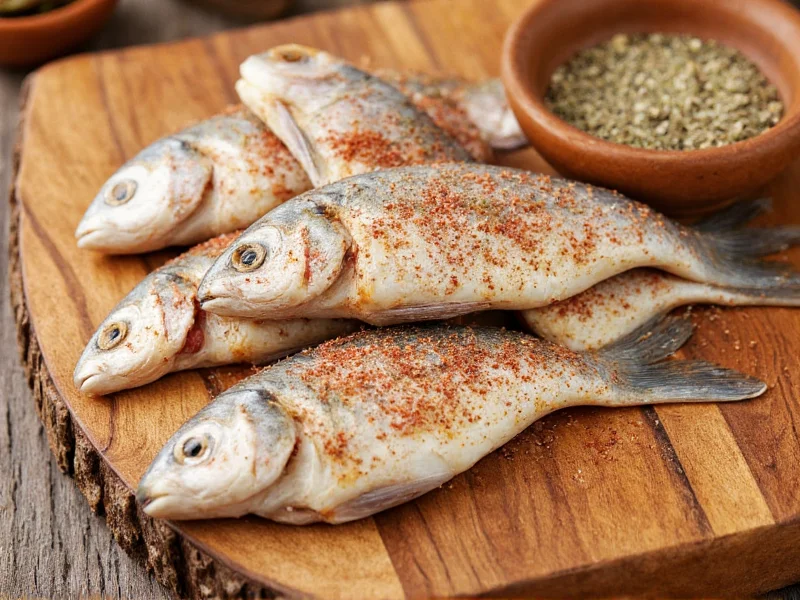Fish requires thoughtful seasoning due to its delicate texture and subtle flavor profile that differs significantly from other proteins. Unlike beef or chicken, which can handle bolder spice combinations, fish benefits from seasoning blends that enhance rather than dominate its natural taste. Understanding how to properly season fish transforms ordinary seafood dishes into restaurant-quality meals with minimal effort.
The Science Behind Fish Seasoning
Fish contains different flavor compounds than land-based proteins, particularly higher levels of omega-3 fatty acids that create distinctive taste profiles. These compounds interact differently with seasonings, making certain spice combinations particularly effective. The delicate flesh of most fish varieties absorbs flavors quickly, which is why balanced seasoning blends work better than single aggressive spices.
Essential Components of Quality Fish Seasoning
Professional chefs and culinary experts agree that effective fish seasoning contains these key elements:
| Component | Purpose | Common Examples |
|---|---|---|
| Salt | Enhances natural flavors and draws out moisture | Sea salt, kosher salt, celery salt |
| Herbs | Adds aromatic complexity without overpowering | Dill, parsley, tarragon, chives |
| Subtle Spices | Provides depth and warmth | Paprika, coriander, white pepper |
| Citrus Elements | Complements fish's natural acidity | Lemon zest, dried lime, sumac |
| Umami Boosters | Enhances savory notes | Garlic powder, onion powder, dried seaweed |
Regional Fish Seasoning Traditions
Culinary traditions around the world have developed distinctive fish seasoning approaches based on local ingredients and cooking methods:
- Mediterranean: Features lemon zest, oregano, and garlic powder with a touch of olive oil for moisture retention
- Asian-inspired: Combines ginger, sesame seeds, and subtle chili with rice vinegar for brightness
- Cajun/Creole: Uses paprika, cayenne, and thyme for heartier fish like catfish or swordfish
- Scandinavian: Relies on dill, lemon, and subtle caraway notes that complement delicate white fish
Homemade Fish Seasoning Recipes
Creating your own fish seasoning blends ensures freshness and allows customization for specific dishes. These simple recipes require common pantry ingredients:
Basic All-Purpose Fish Seasoning
This versatile blend works with most white fish varieties including cod, haddock, and tilapia:
- 2 tablespoons paprika
- 1 tablespoon dried dill
- 1 tablespoon garlic powder
- 1 tablespoon lemon zest (dried)
- 2 teaspoons onion powder
- 1½ teaspoons sea salt
- ½ teaspoon white pepper
Mix thoroughly and store in an airtight container. Use 1-2 teaspoons per pound of fish.
Citrus-Herb Blend for Delicate Fish
Ideal for flounder, sole, or trout that benefit from bright, fresh flavors:
- 2 tablespoons dried parsley
- 1 tablespoon dried tarragon
- 1 tablespoon lemon zest (dried)
- 1 tablespoon orange zest (dried)
- 1½ teaspoons sea salt
- 1 teaspoon coriander
- ½ teaspoon fennel seeds (crushed)
Proper Application Techniques
How you apply seasoning matters as much as the blend itself. For optimal results:
- Dry brine first: Apply salt-based seasonings 15-30 minutes before cooking to allow penetration without drawing out excessive moisture
- Consider cooking method: Grilled fish benefits from oil-based pastes, while baked fish works better with dry rubs
- Balance delicate vs. hearty fish: Use lighter seasonings for flounder or sole, bolder blends for salmon or tuna
- Layer flavors: Combine dry seasoning with finishing elements like fresh herbs or citrus juice after cooking
Common Fish Seasoning Mistakes to Avoid
Even experienced home cooks make these seasoning errors that compromise fish dishes:
- Over-seasoning delicate fish: Lighter fish varieties like cod or halibut become unbalanced with heavy spice applications
- Applying seasoning too late: Dry seasonings need time to penetrate; apply at least 15 minutes before cooking
- Ignoring fish fat content: Fattier fish like salmon can handle stronger seasonings than lean varieties
- Using wet ingredients in dry rubs: Moisture causes spices to burn during high-heat cooking methods
- Not adjusting for cooking method: Grilled fish needs oil-based pastes while baked fish works better with dry rubs
Storage and Shelf Life Guidelines
Homemade seasoning blends maintain peak flavor for 3-6 months when stored properly. Keep your fish seasoning in an airtight container away from heat and direct sunlight. Glass jars with tight-sealing lids work best. Discard blends that have lost their aroma or show signs of clumping (indicating moisture exposure). For longest shelf life, store in the refrigerator—especially blends containing citrus zest.











 浙公网安备
33010002000092号
浙公网安备
33010002000092号 浙B2-20120091-4
浙B2-20120091-4